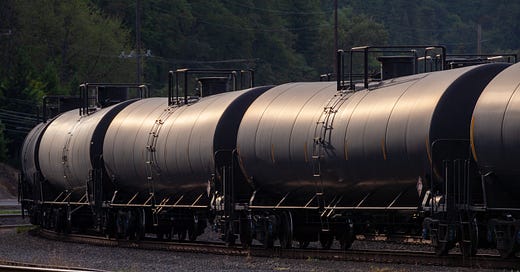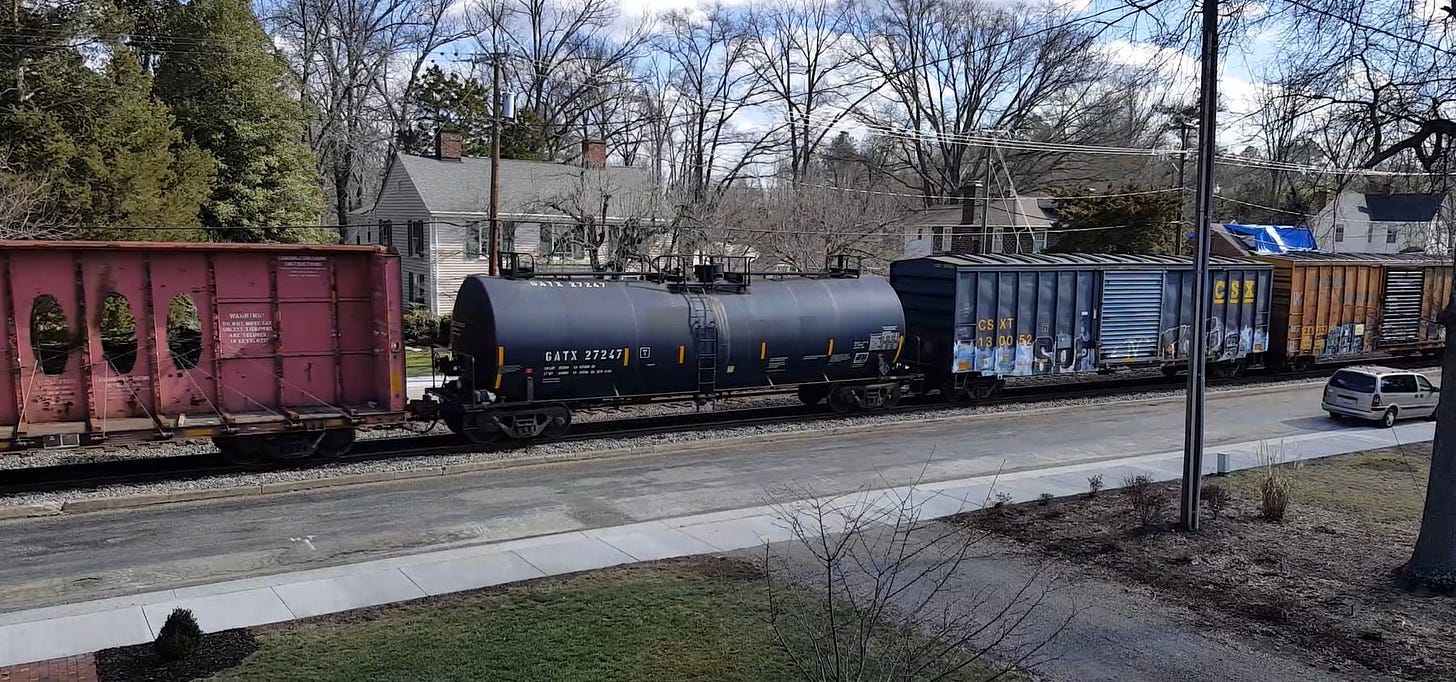This post is the second in a series to do with process safety and the transportation of hazardous chemicals by rail. In the first post we provided an overview of the accident that occurred in East Palestine, Ohio on February 23, 2023. Based on the National Transportation Safety Board report to do with that event and on the findings of many other similar reports and analyses, we suggested that the process safety discipline could contribute toward the safe transportation of these chemicals.
In this and subsequent posts we consider some of the similarities and differences between the traditional energy/process facilities and railroads. Issues to think about include:
Trains move;
Ownership;
Public Domain;
No On-Board Processing / Ambient Conditions;
Emergency Services not specialized;
RMP vs. OSHA; and
Lack of specialized information.
We consider the first two of these points in this post.
Trains Move
The first, and most obvious difference between the process industries and railroads is that trains move, whereas chemical plants, oil refineries and offshore platforms stay in one place. The fact that tank cars are moving adds a set of hazards and operational complexity that the process industries do not need to consider. For example, the East Palestine event was initiated by an over-heated wheel bearing that led to axle failure, that then led to derailment of many of the cars.
The fact that trains are constantly on the move raises an organizational challenge. A process facility has just one emergency response team, one local fire department, one set of environmental regulations, and so on. A train carrying highly hazardous chemicals, on the other hand, is constantly moving from one jurisdiction to another. This means that the management of an emergency is more than a little challenging.
Ownership
Most process facilities, either onshore or offshore, are owned and controlled by one company. These companies may make extensive use of contractors, but there is no doubt as to who is in control.
The situation is not so simple with railroad operations. The train operator likely does not own the cars that are being hauled. Moreover, those cars often spend considerable amounts of time on private tracks and sidings or spurs. For example, a chemical company may own a tank car. that is parked at the company’s site for many days while being loaded. The loaded car is then moved on to the tracks owned by the railroad company. The question as to who is responsible for what can be tricky.
The fact that so many tank cars are covered in graffiti illustrates this point. The operators of the railroad strongly dislike this practice. Not only does graffiti disfigure the cars, it may cover placards on other signs on the cars that are important for safety. This practice is illegal, dangerous and expensive. Moreover, the person painting the cars is putting himself at risk. However, the graffiti is often painted on to the cars while they are parked at someone else’s property.
(I live on the east coast mainline; it is my impression that tank cars are less disfigured with graffiti than box cars.)






